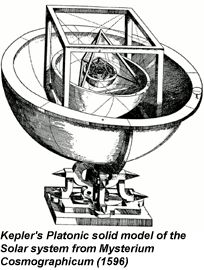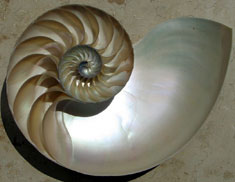The term sacred geometry describes the geometrical laws which create everything in existence. It unites the mind and the heart, spirit and matter, science and spirituality. Everything in nature is made up of patterns, structures, and designs from the smallest atom to the infinite universe. Each of nature’s creations reveals to us the nature of that object and its own energetic vibration. Thus every creation has a unique vibratory frequency. The interaction of all the vibratory frequencies found in creation show us the intrinsic unity of the part to the whole.
The general belief behind sacred geometry is that geometry and mathematical ratios, harmonics and proportion are also found in music, light, and cosmology. This value system is seen as widespread even in prehistory, a cultural universal knowing of the human condition. It is considered foundational to building sacred structures such as temples, mosques, megaliths, monuments and churches; sacred spaces such as altars, temenoi and tabernacles; meeting places such as sacred groves, village greens and holy wells and the creation of religious art, iconography and using “divine” proportions. Alternatively, sacred geometry based arts may be ephemeral, such as visualization, sandpainting and medicine wheels.
 Sacred geometry may be understood as a worldview of pattern recognition, a complex system of religious symbols and structures involving space, time and form. According to this view the basic patterns of existence are perceived as sacred. By connecting with these, a believer contemplates the Great Mysteries, and the Great Design. By studying the nature of these patterns, forms and relationships and their connections, insight may be gained into the mysteries – the laws and lore of the Universe.
Sacred geometry may be understood as a worldview of pattern recognition, a complex system of religious symbols and structures involving space, time and form. According to this view the basic patterns of existence are perceived as sacred. By connecting with these, a believer contemplates the Great Mysteries, and the Great Design. By studying the nature of these patterns, forms and relationships and their connections, insight may be gained into the mysteries – the laws and lore of the Universe.
Music
The discovery of the relationship of geometry and mathematics to music within the Classical Period is attributed to Pythagoras, who found that a string stopped halfway along its length produced an octave, while a ratio of 3/2 produced a fifth interval and 4/3 produced a fourth. Pythagoreans believed that this gave music powers of healing, as it could “harmonize” the out-of-balance body, and this belief has been revived in modern times.
Hans Jenny, a physician who pioneered the study of geometric figures formed by wave interactions and named that study cymatics, is often cited in this context.
Cosmology
At least as late as Johannes Kepler (1571-1630), a belief in the geometric underpinnings of the cosmos persisted among scientists. Kepler explored the ratios of the planetary orbits, at first in two dimensions (having spotted that the ratio of the orbits of Jupiter and Saturn approximate to the in-circle and out-circle of an equilateral triangle). When this did not give him a neat enough outcome, he tried using the Platonic solids. In fact, planetary orbits can be related using two-dimensional geometric figures, but the figures do not occur in a particularly neat order. Even in his own lifetime (with less accurate data than we now possess) Kepler could see that the fit of the Platonic solids was imperfect. However, other geometric configurations are possible.

Natural Forms
Many forms observed in nature can be related to geometry (for sound reasons of resource optimization). For example, the chambered nautilus grows at a constant rate and so its shell forms a logarithmic spiral to accommodate that growth without changing shape. Also, honeybees construct hexagonal cells to hold their honey. These and other correspondences are seen by believers in sacred geometry to be further proof of the cosmic significance of geometric forms. But some scientists see such phenomena as the logical outcome of natural principles.
Art and Architecture
The golden ratio, geometric ratios, and geometric figures were often employed in the design of Egyptian, ancient Indian, Greek and Roman architecture. Medieval European cathedrals also incorporated symbolic geometry. Indian and Himalayan spiritual communities often constructed temples and fortifications on design plans of mandala and yantra. For examples of sacred geometry in art and architecture refer:
- Labyrinth (an Eulerian path, as distinct from a maze)
- Mandala
- Flower of Life
- Parthenon
- Taijitu (Yin-Yang)
- Tree of Life
- Rose Window
- Celtic art such as the “Book of Kells”
- Yantra
- Swastika
- Dharmacakra
- Vesica piscis
- Metatron’s Cube
Contemporary Usage
A contemporary usage of the term sacred geometry describes assertions of a mathematical order to the intrinsic nature of the universe. Scientists see the same geometric and mathematical patterns as arising directly from natural principles.
Some of the most prevalent traditional geometric forms ascribed to sacred geometry include the sine wave, the sphere, the vesica piscis, the 5 platonic solids, the torus (donut), the golden spiral, the tesseract (4-dimensional cube), and the merkaba (2 oppositely oriented and interpenetrating tetrahedrons).
Reference:
Wikipedia: Sacred Geometry










